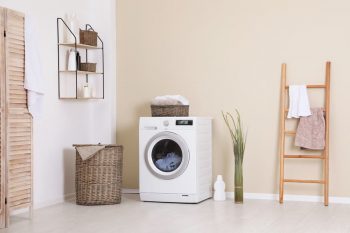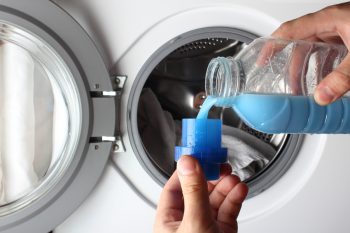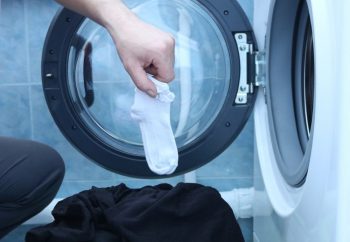
If you’re a pool owner, you understand the importance of keeping your pool clean and well-maintained. A key component of this process is the pool vacuum. However, you may have encountered a common issue with your Intex pool vacuum – it’s not moving. This article will delve into the reasons why your Intex pool vacuum may not be moving and offer you practical solutions to get it back to work.
Your Intex pool vacuum might not be moving due to reasons such as inadequate water pressure, a blocked or failed diaphragm or flapper, air leaks in the hose or connections, a full debris bag or filter, worn or misaligned drive tracks or wheels, or internal mechanism issues. You can resolve these issues by checking the water pressure, cleaning the intake hole, ensuring all connections are sealed, emptying the debris bag or filter, checking the drive tracks or wheels for alignment, and inspecting the internal parts of the vacuum.
Inadequate Water Pressure
One of the most common reasons for a slow-moving cleaner is inadequate water pressure. The vacuum depends on sufficient water pressure to operate effectively. If the water pressure is too low, it can result in reduced suction power and subsequently, a vacuum that refuses to move. A quick fix to this is to check the filter screens and ensure the pool water chemistry is balanced.
Stuck or Failed Diaphragm or Flapper
The diaphragm or flapper of your Intex pool vacuum can become congested due to a blockage in the pool filter or at the intake hole at the bottom of the cleaner. This can lead to a malfunction, causing the vacuum to stop moving. To fix this, clean the intake hole and check for obstructions inside the hose.
Air Leaks in the Hose or Connections
Loose connections or punctured hoses can lead to air leaks, causing air bubbles at the return line. This can reduce the vacuum’s efficiency and hinder its movement. Ensure that all vacuum connections are securely sealed. If you find any damaged O-rings or leaks in the hose, replace them or seal the hose leaks with silicone or rubber cement.
Full Debris Bag or Filter
A full debris bag or filter can cause the vacuum to stop moving. This is because the vacuum cannot suck in more water if it’s already full of debris. The solution is simple – clean or replace the filter pump cartridge or backwash the sand filter if necessary.
Worn or Misaligned Drive Tracks or Wheels
The wheels or tracks of your vacuum drive can wear out over time or become misaligned, affecting the vacuum’s mobility. Check all the belts, pulleys, and drive tracks or wheels for proper position and alignment. Replace any worn or rounded parts as needed.
Internal Mechanism Issues
Sometimes, a part of the internal mechanism might get stuck, causing the vacuum to stop moving. This issue can be a bit tricky to troubleshoot, but a thorough inspection of the vacuum parts and a good cleaning can often fix the problem.
Conclusion
Maintaining your pool’s cleanliness is crucial, and a well-functioning pool vacuum plays a significant role in this process. If your Intex pool vacuum isn’t moving, don’t panic. With a little troubleshooting and regular maintenance, you’ll be able to resolve the issue and get your vacuum back on track.
Remember, prevention is better than cure. Regularly inspect and clean your vacuum parts, check the hose for clogs, and ensure proper water flow to keep your vacuum running smoothly. If your vacuum still refuses to move after following these steps, it might be time to contact Intex customer support for further assistance.
Frequently Asked Questions
How often should I clean my Intex pool vacuum?
The frequency of cleaning your Intex pool vacuum depends on how often you use it and the amount of debris in your pool. However, it’s generally recommended to clean your vacuum at least once a month. If you notice a decrease in suction or the vacuum moving slowly, it might be time for a cleaning.
What should I do if my Intex pool vacuum is still not moving after following the troubleshooting steps?
If your Intex pool vacuum is still not moving after following the troubleshooting steps, it’s best to contact Intex customer support. They can provide further assistance and may help identify if there’s a specific part that needs to be replaced.
Can I use any type of silicone or rubber cement to seal hose leaks?
Yes, you can use any type of silicone or rubber cement to seal hose leaks, but it’s recommended to use a waterproof and mold-resistant type for best results.
How do I know if my pool water chemistry is balanced?
You can determine if your pool water chemistry is balanced by using a pool water testing kit. This will measure the levels of pH, alkalinity, and sanitizer in your pool water. The ideal pH level is between 7.2 and 7.6, the ideal alkalinity level is between 80 and 120 ppm, and the ideal sanitizer level depends on whether you’re using chlorine or bromine.
How can I prevent my Intex pool vacuum from getting clogged?
You can prevent your Intex pool vacuum from getting clogged by regularly removing large debris from your pool before running the vacuum. Additionally, regularly cleaning the filter and debris bag can help prevent clogs.












